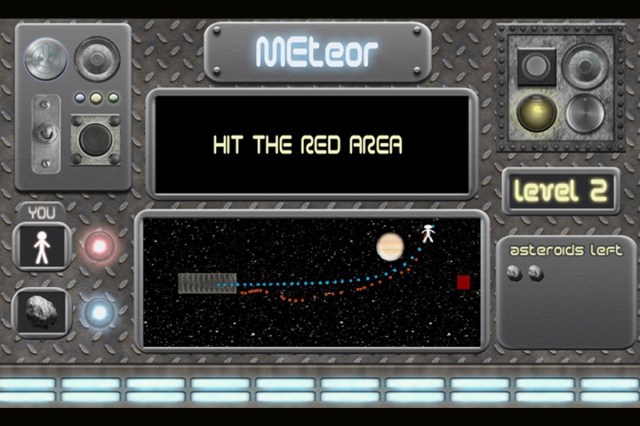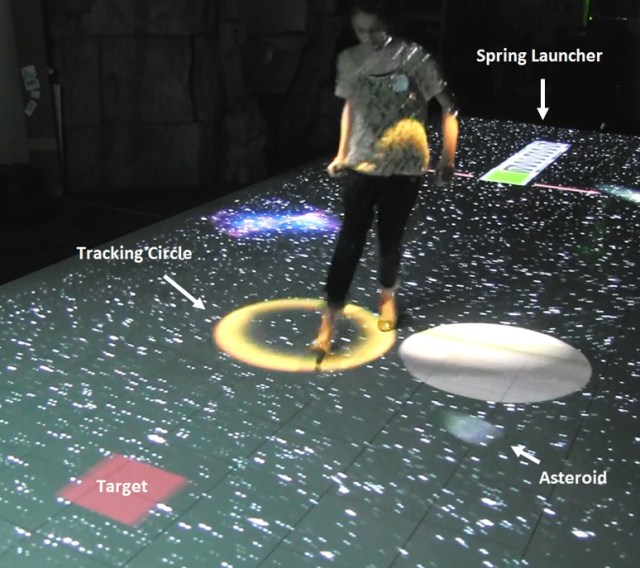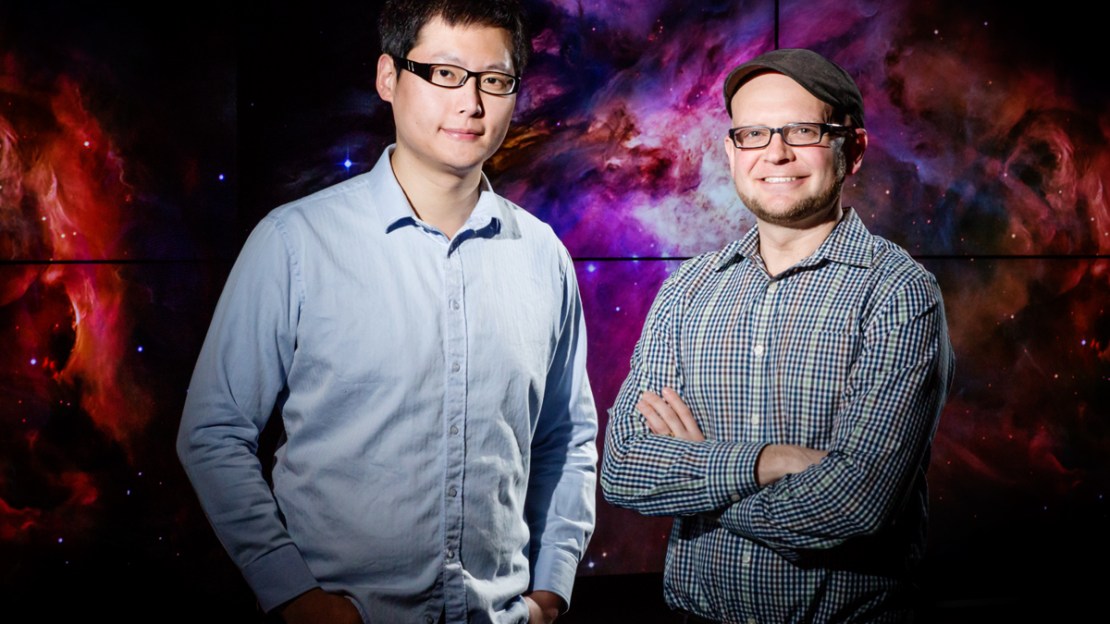BTN.com staff, April 23, 2016
Many of us can recall sitting in a classroom, impatiently tapping a pencil on the top of our desk, barely paying attention as a teacher droned on about something we neither understood nor expected to use outside of the school.
Well, a group of researchers at the University of Illinois is working on something that could capture the imaginations of similarly spaced-out students. Professor Robb Lindgren and graduate student Sam Wang, working with colleagues from Vanderbilt University and the University of Central Florida, developed a program of mixed-reality technologies that?s intended to improve comprehension of complex ideas - particularly in science, technology, engineering and mathematics (STEM) subjects.
The MEteor program is part of a larger spread of activities and grant-funded work that the team conducts to understand the ways in which physical activity can be used to support learning in STEM. Lindgren said that the idea for MEteor came from knowing how difficult it can be for students at the middle-school age to understand basic physics ideas, such as how objects move through space.

They tested two groups of students to prove the concept worked. One group used a typical desktop computer simulation with a mouse and a keyboard, and the other group was embedded within a simulation. Lindgren then measured how interested they were in science, their understanding of physics and several other variables.
?We found some pretty significant results in terms of not only how much they learned and understood about physics concepts,? he said, ?but also, their interest and enjoyment of these kinds of science activities were much higher with the full-body immersive version of the simulation.?
In these kinds of role-playing activities, students change their perspective to think about themselves as being part of science, rather than just listening to someone talk about it.
?What?s really exciting about where we?re at now [is that] you could always use body movement and gesture, but [with] Meteor, you can actually see your path and compare it to how an asteroid actually moves when it?s going by a planet or some other force of gravity,? Lindgren explained. ?Students can see themselves and project themselves, and I think that is incredibly powerful.?

Lindgren and his team are working with middle-school students in Urbana and Danville, Ill., to look more deeply at the idea of embodied learning. They?re talking with students and generating ideas to develop future simulation environments.
Even 10 years ago, Lindgren said, it would have been prohibitively expensive to incorporate these immersive experiences in students? learning. Now the technology could be used to enhance a field trip at a museum. And soon, it might be part of a regular classroom.
[btn-post-package]?These mixed-reality activities provide good foundations for conversations and discussion,? Lindgren said. ?They aren?t just games that people play. Kids can be interacting with these types of environments while explaining to other students what?s happening from a scientific or mathematical perspective.?
Further, these mixed-reality opportunities encourage teachers and parents to think more critically about how kids can be integrated into the learning experience and how we assess different styles of learning.
?Maybe it isn't just a matter of what a student is able to write down on a test,? Lindgren said. ?But if they can show you with gestures or by moving around in a certain way that they understand a complicated topic like physics, it could be a good way to understand and further education.?
By Betsy Piland







